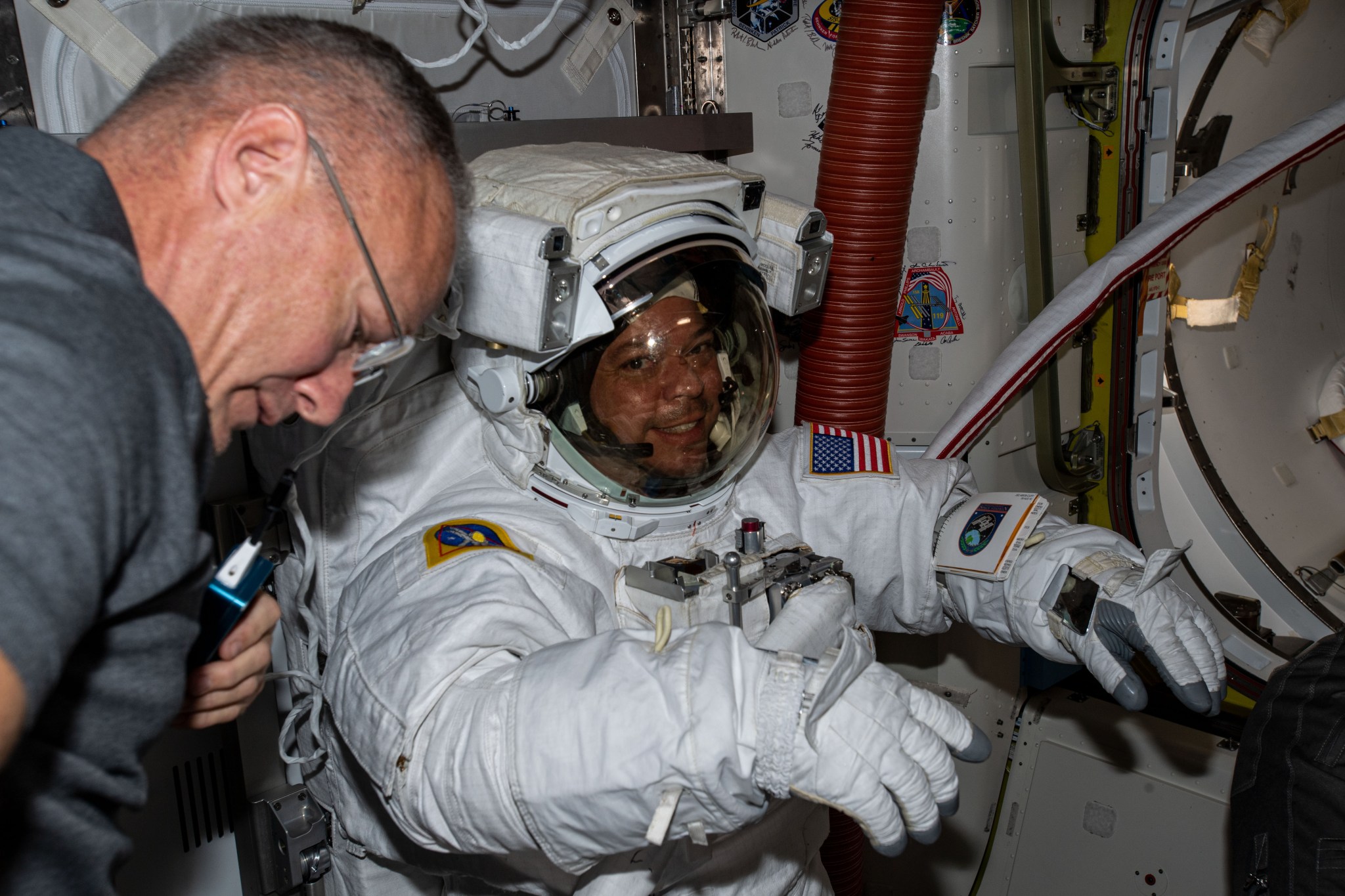Aviation scholars from across the nation will pose questions next week to NASA astronauts aboard the International Space Station. The educational downlink event will air live at 1:10 p.m. EDT Tuesday, July 14, on NASA Television and the agency’s website.
NASA astronauts Robert Behnken and Douglas Hurley will answer prerecorded questions from students participating in the Experimental Aircraft Association’s (EAA) Young Eagles Ray Aviation Scholars program. EAA is a community of more than 240,000 members in 900 local chapters who embody the spirit of aviation by sharing their passion for flying, building, and restoring recreational aircraft.
This downlink is produced in partnership with NASA’s Aeronautics Research Mission Directorate, which directly benefits today’s air transportation systems, the aviation industry, and the passengers and businesses who rely on aviation every day.
Charles Precourt, retired NASA astronaut and EAA board member, will provide opening and closing remarks for the event.
Linking students directly to astronauts aboard the space station provides unique, authentic experiences designed to enhance student learning, performance and interest in science, technology, engineering, and mathematics. Astronauts living in space on the orbiting laboratory communicate with NASA’s Mission Control Center in Houston 24 hours a day through the Space Network’s Tracking and Data Relay Satellites (TDRS).
For nearly 20 years, astronauts have been continuously living and working on the space station, testing technologies, performing science and developing the skills needed to explore farther from Earth. Through NASA’s Artemis program, the agency will send astronauts to the Moon by 2024, with eventual human exploration of Mars. Inspiring the next generation of explorers – the Artemis Generation – ensures America will continue to lead in space exploration and discovery.
Follow America’s Moon to Mars exploration at:
Follow NASA astronauts on social media at:
See videos and lesson plans highlighting research on the International Space Station at:
-end-
J.D. Harrington
Headquarters, Washington
202-358-5241
j.d.harrington@nasa.gov
Sandra Jones
Johnson Space Center, Houston
281-483-8670
sandra.p.jones@nasa.gov



























